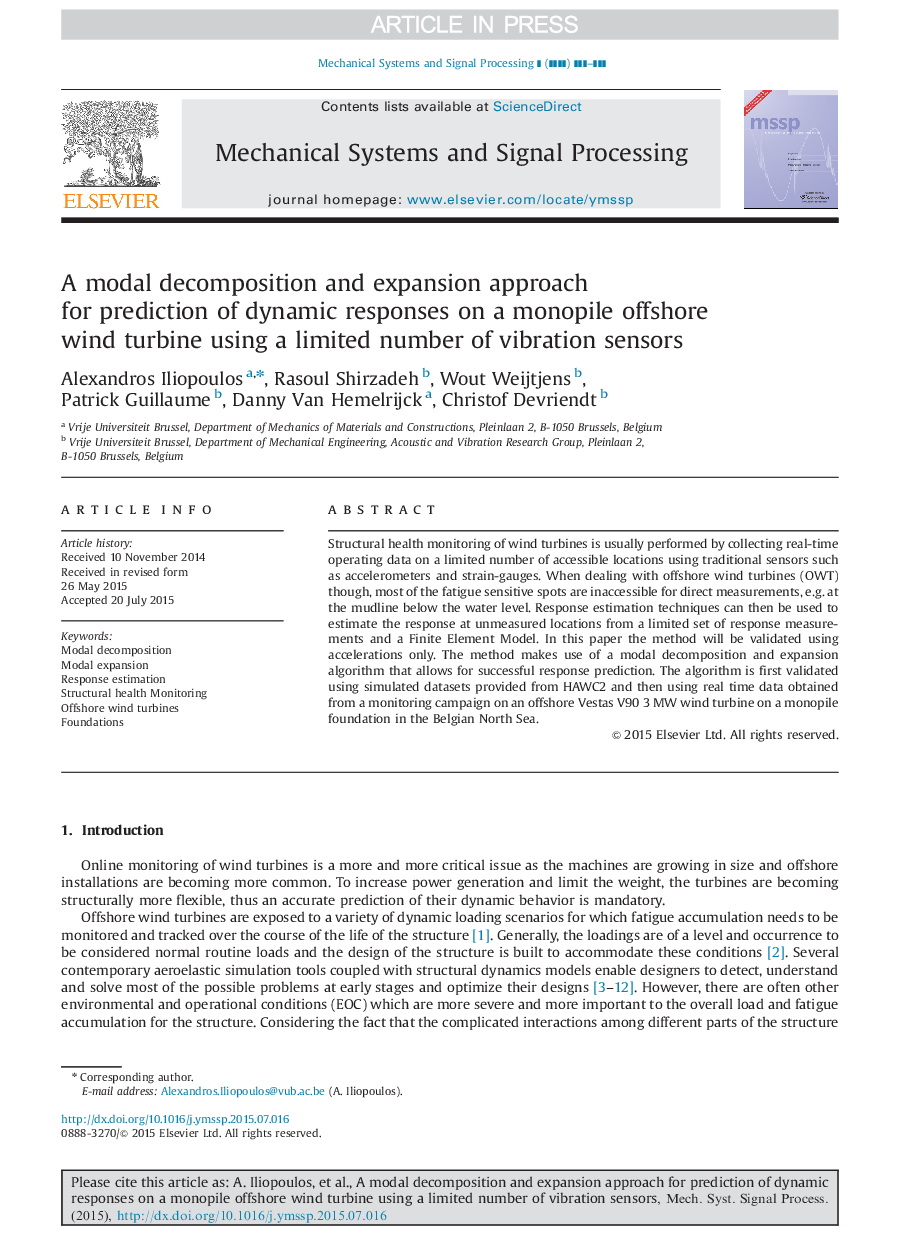| Article ID | Journal | Published Year | Pages | File Type |
|---|---|---|---|---|
| 6955594 | Mechanical Systems and Signal Processing | 2016 | 21 Pages |
Abstract
Structural health monitoring of wind turbines is usually performed by collecting real-time operating data on a limited number of accessible locations using traditional sensors such as accelerometers and strain-gauges. When dealing with offshore wind turbines (OWT) though, most of the fatigue sensitive spots are inaccessible for direct measurements, e.g. at the mudline below the water level. Response estimation techniques can then be used to estimate the response at unmeasured locations from a limited set of response measurements and a Finite Element Model. In this paper the method will be validated using accelerations only. The method makes use of a modal decomposition and expansion algorithm that allows for successful response prediction. The algorithm is first validated using simulated datasets provided from HAWC2 and then using real time data obtained from a monitoring campaign on an offshore Vestas V90 3 MW wind turbine on a monopile foundation in the Belgian North Sea.
Keywords
Related Topics
Physical Sciences and Engineering
Computer Science
Signal Processing
Authors
Alexandros Iliopoulos, Rasoul Shirzadeh, Wout Weijtjens, Patrick Guillaume, Danny Van Hemelrijck, Christof Devriendt,
